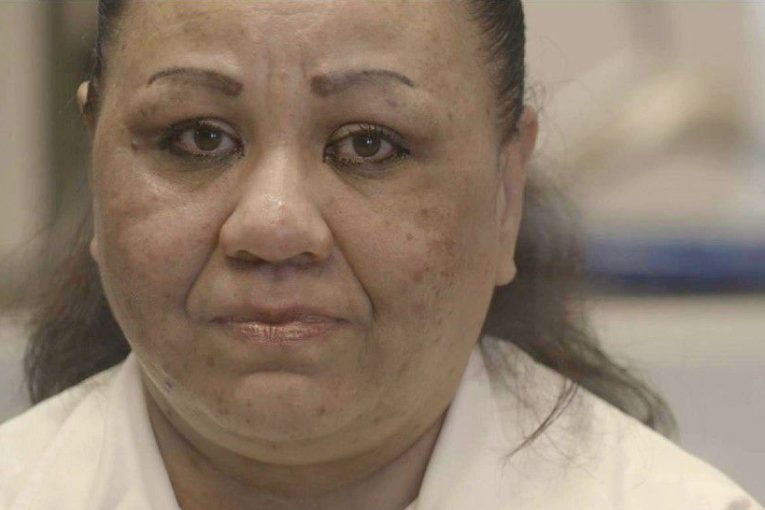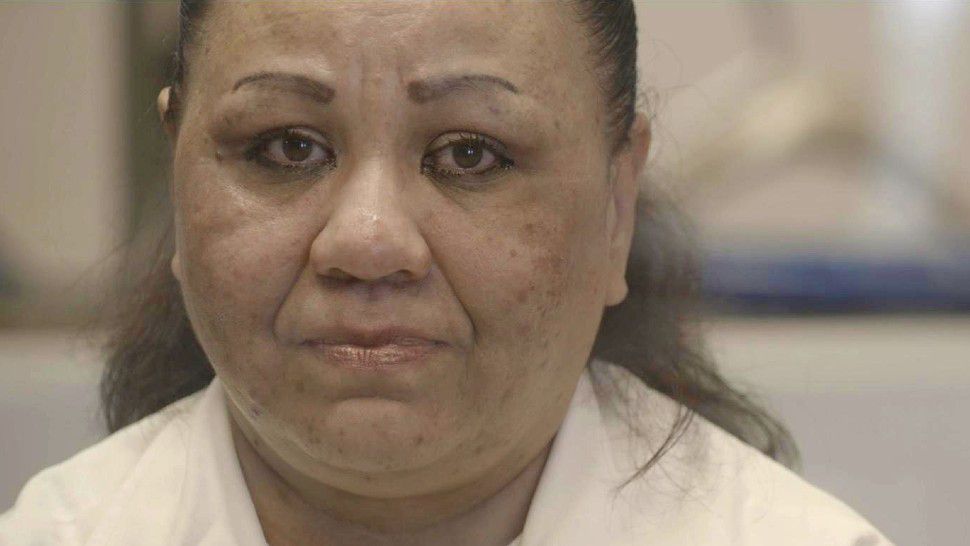

By David M. Greenwald
Executive Editor
Austin, TX – Attorneys for Melissa Lucio have submitted an application for clemency to Governor Greg Abbott and the Texas Board of Pardons and Paroles. The evidence, they say, overwhelming shows that Lucio, a victim of sexual abuse and domestic violence, was wrongly convicted and condemned to die for the accidental death of her daughter, Mariah. Melissa is scheduled for execution on April 27, 2022.
They are asking for her sentence to be commuted or, in the alternative, for a 120-day reprieve to allow new evidence to be fully examined.
“Mariah Alvarez’s death was a tragedy, not a murder,” said Sandra Babcock, faculty director of the Cornell Center on the Death Penalty World Wide.
Vanessa Potkin, director the Innocence Project, said during a press conference on  Tuesday, “Melissa Lucio’s clemency petition is supported by new scientific evidence that no decision maker has ever heard that Mariah’s death was a tragedy, not a murder, like so many cases that we’ve worked on at the Innocence Project.”
Tuesday, “Melissa Lucio’s clemency petition is supported by new scientific evidence that no decision maker has ever heard that Mariah’s death was a tragedy, not a murder, like so many cases that we’ve worked on at the Innocence Project.”
She called Lucio’s wrongful conviction a rush to judgment on February 15, 2007, when Lucio along with Mariah’s father were moving their family into a new place to live.
Mariah had fallen down about 14 stairs.
“It didn’t appear that Mariah was seriously injured at the time she was bleeding from where her bottom tooth cut into her lip, but there were no other outward injuries,” Potkin explained. “Tragically, Mariah deteriorated over the next couple days, leading to her death by February 17.”
She described the girl as “congested,” “sleeping excessively” and not wanting to eat.
“When the family went to check on her during a nap, she was no longer breathing. They frantically called 9 1 1. Melissa told emergency responders who got to the house that Mariah had fallen down the stairs days before; the paramedic was immediately suspicious because the residence that he arrived at was just a single story,” she continued.
The residence only had three steps in front and the paramedic thought it was odd and suspicious.
But, explained Potkin, “He had made a mistake. Mariah had fallen down the stairs at the apartment that they were moving out of.”
Critically though, the police presumed her guilty, and in shock and grief, the mother was hauled into an interrogation room where she was interrogated for over five hours as “officers threatened her and berated her parenting. Yelling at her, showing her pictures of her child who was deceased, and told her that she had to have caused her death.”
She explained that seven experts, “including nationally recognized medical and forensic scientists, have now reviewed the evidence in Melissa’s case.”
Their report, she said, “supports that Melissa was wrongfully convicted based on false testimony for the accidental death of her daughter.”
Potkin explained, “Melissa was relentlessly pressured and extensively manipulated throughout the many hours of interrogation. And she was especially vulnerable to the coercive interrogation tactics due to her history of abuse and trauma. Abnormally high levels of suggestibility and compliance, which has been demonstrated through recent testing and the childhood sexual abuse and domestic violence that Melissa endured left her vulnerable.”
“Presumptive police interrogations are a primary cause of wrongful convictions in the United States. Of the 67 women listed on the national registry of exonerations who were exonerated after a murder conviction, one quarter, one in four falsely confessed,” Potkin said.
Mariah’s death was thus declared a murder before the autopsy even began. She noted the report of a pediatric pathologist “commented that the investigation of Mariah’s death was sign prejudiced, not evidence-based and Dr. Farley failed to consider any cause of her death other than abuse.”
She said, “This is particularly problematic because child abuse is a diagnosis of exclusion. You have to consider what else could have caused the injury. But Dr. Farley failed to consider Mariah’s prior medical, which included trouble walking and documented falls, a prior traumatic brain injury.”
“The jury was told by the state’s experts that there was profound bruising on Mariah’s body that could have only come from an intentional beating and that Mariah’s injuries had to have happened shortly before her death,” she said. “That testimony was false.”
David Thompson is a forensic interviewer. He noted that “outdated interrogation tactics have been known to increase the risk of false confessions.”
He said that he reviewed the five hours of interrogation and found three critical errors that occurred in the interrogation of Lucio that resulted “in a coerced compliant confession.”
Thompson noted, “Repetitive threats combined with promises or suggestions of leniency are known to incentivize innocent subjects to confess. These tactics, alongside Ms. Lucio’s susceptibility and her state of mind in a lengthy interrogation shortly after her daughter’s death, are known to have a substantial psychological impact on a subject’s decision-making” and found her statements are a result of fact-feeding or other tactics used by investigators.
He concluded, “Lucio complies with the investigators and produces an unreliable and coerced compliant confession.”
Gisli Gudjonsson, one of the world’s leading experts in false confessions, also evaluated the interrogation and concluded the case presents a “very high” risk of false confession and in his “extensive forensic evaluation of cases of disputed confessions internationally, the number, severity, and combination of the risk factors involved during the lengthy interrogation are exceptional.”
He further explained her “history of negative/traumatic life events is associated with increased level of suggestibility, compliance, and false confession . . . because trauma significantly reduces the resilience of the trauma victims to cope with interrogative pressure.”
Among the medical experts, Dr. Michael Laposata, the chairman of the Department of Pathology at the University of Texas Medical Branch at Galveston, concluded that at the time of her death Mariah had indications of Disseminated Intravascular Coagulation (DIC), a disorder that causes extensive bruising following a head trauma, like the injury that Mariah suffered from her fall, or an infection.
Laposata stated in his declaration, DIC can cause profound bruising throughout the body with no trauma whatsoever. “In patients with DIC, routine handling at home or in a hospital setting can cause significant bruising. It is not possible to tell the difference between a bruise from DIC and a bruise from abuse.”
Further Dr. Janice Ophoven, a pediatric forensic pathologist, concluded that Mariah’s autopsy indicates she was in DIC at the time of her death. Her records also show she had a persistent high fever, and was sufficiently dehydrated to experience shock.
The application states: “[S]teeped in extrinsic, biasing information, [Dr. Farley] failed to review any of Mariah’s medical history to look for any explanation or contributing cause to her injuries, conduct any basic laboratory tests to diagnose a coagulation disorder, or even perform simple testing to confirm the presence of infection or sepsis.”
“In Melissa’s case, the legal system’s failure to acknowledge the effects of child sexual abuse and domestic violence led directly to the conviction and death sentence of an innocent woman. Meanwhile, her abusive partner is now a free man. This is why Texans who have spent their lives helping survivors of gender-based violence are pleading with the Board and the Governor to grant clemency to Melissa Lucio,” said Babcock.






